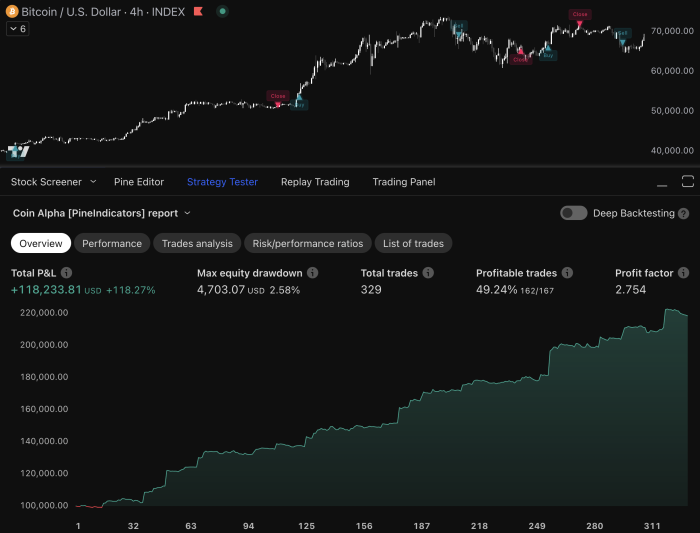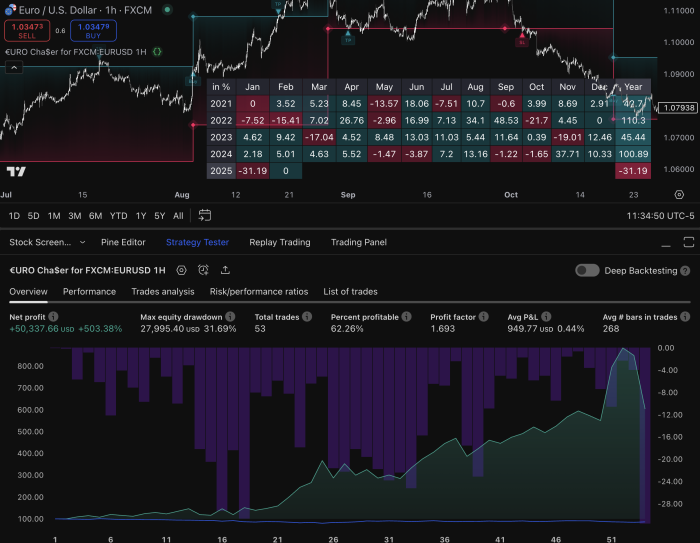Introduction
Trading signals are triggers that indicate when it is a good time to buy or sell a security based on a predetermined set of criteria. These signals play a crucial role in decision-making by providing traders with actionable insights derived from market analysis.
Key takeaway: Trading signals are essential tools for traders to make informed decisions in the market. They can be generated through various methods, including:
- Technical analysis
- Fundamental analysis
- Quantitative algorithms
However, it’s important to be aware of their limitations and risks, such as false signals and market volatility.
In this article, we’ll break down everything you need to know about trading signals:
- How they’re generated
- Their benefits
- Their limitations
- Best practices for using them effectively
Understanding Trading Signals
What Are Trading Signals and How Do They Work?
Trading signals are indicators that suggest optimal times to buy or sell a security based on predefined criteria. These signals aim to guide traders by providing actionable insights derived from various analytical methods. The core idea is to remove emotional bias from trading decisions, allowing for more objective and systematic approaches.
Types of Trading Signals
There are two primary types of trading signals:
- Buy Signals: Indicate a favorable time to purchase an asset. For example, a buy signal might be triggered when the price crosses above a specific moving average.
- Sell Signals: Suggest an opportune moment to sell an asset. A typical sell signal could occur when the relative strength index (RSI) exceeds a certain threshold, indicating overbought conditions.
The Role of Triggers in Executing Trades
Triggers are specific conditions that activate trading signals. These can be simple, such as a single technical indicator reaching a certain level (which can be explored further here), or complex, involving multiple factors like price patterns and volume changes. Once a trigger is activated, it prompts the trader to execute the corresponding action, whether it’s buying or selling. This mechanism ensures timely decision-making aligned with the trading strategy in place.
Understanding different types of trading signals and their triggers is crucial for developing effective trading strategies. Each signal type serves a specific purpose within the broader context of market analysis and decision-making. As you delve deeper into this subject, you may find it beneficial to explore comprehensive resources such as this thesis by Sammy Zeigenbein which provides valuable insights into trading signals and strategies.
Generating Trading Signals
There are three main ways to generate trading signals: technical analysis, fundamental analysis, and quantitative algorithms. Each method uses its own tools and indicators to figure out the best times to buy or sell securities.
Technical Analysis
Technical analysis involves studying historical price movements and trading volumes to forecast future market behavior. Common indicators used in technical analysis include:
- Moving Averages (MA): Helps smooth out price data to identify trends over specific periods.
- Relative Strength Index (RSI): Measures the magnitude of recent price changes to evaluate overbought or oversold conditions.
- Chart Patterns: Shapes such as head-and-shoulders or triangles that indicate potential reversals or continuations in price trends.
These indicators aim to provide clear entry and exit points for trades based on historical data.
Fundamental Analysis
Fundamental analysis focuses on evaluating a security’s intrinsic value by examining related economic and financial factors. Key elements include:
- Earnings Reports: Quarterly financial statements that offer insights into a company’s profitability and future prospects.
- Economic Indicators: Statistics like GDP growth rates, unemployment rates, and inflation figures that reflect the broader economic environment.
By assessing these factors, traders can generate signals based on the perceived strength or weakness of a security relative to its market price.
Quantitative Algorithms
Quantitative algorithms use mathematical models and statistical techniques to analyze vast amounts of data automatically. These algorithms are designed to identify patterns and correlations that human analysts might miss. Key aspects include:
- Automated Trading Systems: Software that executes trades based on predefined criteria without human intervention.
- Machine Learning Models: Advanced algorithms that improve their performance by learning from historical data.
Quantitative algorithms can create highly sophisticated trading strategies, integrating multiple data sources for real-time signal generation.
Benefits of Using Trading Signals
Trading signals help traders make better decisions by providing clear guidelines for when to enter or exit trades. This objectivity is crucial in eliminating the emotional biases that can cloud judgment during high-stakes market movements.
Key Benefits:
- Informed Decision-Making: Trading signals offer clear, data-driven guidelines that help you determine when to buy or sell a security. By relying on predefined criteria, you can make decisions based on solid analysis rather than gut feelings.
- Emotional Control: The mechanical nature of trading signals helps remove emotional decision-making from the equation. Fear and greed are common pitfalls in trading, but sticking to signal-based strategies can mitigate these risks.
- Portfolio Management: Effective use of trading signals allows for better portfolio management. Signals can help you diversify your holdings and allocate assets more efficiently, ensuring a balanced approach to risk and reward.
Increasing profitability becomes attainable when trading signals are used in conjunction with robust risk management techniques. For instance, setting stop-loss orders based on signal indicators can protect against unforeseen market downturns, while optimizing profit targets ensures gains are maximized.
“Trading signals provide a structured framework that aids in maintaining discipline and consistency in trading strategies.”
By integrating these signals into your trading strategy, you create a disciplined approach to navigating the financial markets.
Limitations and Risks Associated with Trading Signals
Trading signals are incredibly useful, but they also have their limitations and risks. Here are some key concerns:
1. False Signals
One major issue is the occurrence of false signals. These are incorrect indications to buy or sell a security that can lead to unprofitable trades. False signals often result from anomalies in data or misinterpretation of market patterns. For example, a sudden increase in trading volume might be mistaken for a trend reversal, prompting an unnecessary trade.
2. Market Volatility
Market volatility presents another challenge. High volatility can distort the reliability of generated signals across different timeframes. During periods of extreme market fluctuations, even well-tested trading strategies may falter, leading to losses. It becomes crucial to distinguish between genuine trends and temporary price swings to avoid misleading signals.
3. Over-Reliance on Technology
Traders must also be cautious about over-reliance on technology. Automated systems and advanced algorithms are powerful tools but should not replace critical thinking and human judgment. Over-dependence on these systems can result in complacency, where traders might ignore broader market conditions or fail to adapt to unexpected developments.
Understanding these risks is essential for making informed decisions and effectively managing trading strategies.
Best Practices for Utilizing Trading Signals Effectively
Backtesting Strategies
Before deploying trading strategies live, it’s crucial to backtest them using historical data. Backtesting allows traders to evaluate how their strategy would have performed in different market conditions. By doing so, you can:
- Identify potential weaknesses in the strategy.
- Gain confidence in the strategy’s effectiveness.
- Make necessary adjustments to improve performance.
For instance, if a particular signal consistently underperforms during high volatility periods, adjustments can be made to mitigate this risk.
Risk Management Techniques
Effective risk management is essential when using trading signals to protect against unforeseen market movements. Consider the following techniques:
- Setting stop-loss orders: This helps limit potential losses by automatically exiting a position once it reaches a predetermined price level.
- Diversifying your portfolio: Spread investments across different asset classes or sectors to reduce exposure to any single market event.
- Position sizing: Determine the amount of capital to allocate for each trade based on your overall risk tolerance and the reliability of the trading signal.
By combining these practices, you enhance your ability to make informed decisions while minimizing potential risks associated with trading signals.
Conclusion: Using Trading Signals Responsibly
Trading signals are a great way to make smart choices in financial markets. By using reliable methods to generate these signals, you can avoid making decisions based on emotions and stick to clear rules for when to enter or exit trades.
Benefits of Using Trading Signals:
- Objective Decision-Making: Trading signals provide clear guidelines based on predefined criteria.
- Increased Profitability: Effective use of signals, combined with proper risk management, can enhance trading outcomes.
It’s important to find a balance between taking risks and being cautious. Always test your strategies in different scenarios and use tools like stop-loss orders to protect yourself from unexpected market changes. This way, you can use trading signals responsibly, improving your performance while keeping potential risks under control.
FAQs (Frequently Asked Questions)
What are trading signals?
Trading signals are indicators that help traders make informed decisions in the market. They can be generated through various methods, including technical analysis, fundamental analysis, and quantitative algorithms.
What types of trading signals exist?
There are primarily two types of trading signals: buy signals and sell signals. Buy signals indicate when a trader should enter a position, while sell signals suggest when to exit or short a position. Both play a significant role in developing trading strategies.
How are trading signals generated?
Trading signals can be generated using three key approaches: technical analysis, which utilizes indicators like moving averages and RSI; fundamental analysis, which considers factors such as earnings reports and economic indicators; and quantitative algorithms, which create automated systems for signal generation.
What are the benefits of using trading signals?
Trading signals aid in making more informed decisions by providing objective criteria for trade entries and exits. When used effectively alongside proper risk management techniques, they have the potential to increase profitability.
What limitations and risks are associated with trading signals?
Trading signals can sometimes produce false signals, leading to potential losses. Additionally, market volatility can affect the reliability of these signals across different timeframes, making it crucial for traders to be cautious.
How can traders utilize trading signals effectively?
Traders should backtest their strategies based on historical data before applying them in live markets. It is also recommended to implement risk management techniques, such as setting stop-loss orders, to protect against unexpected market movements.










